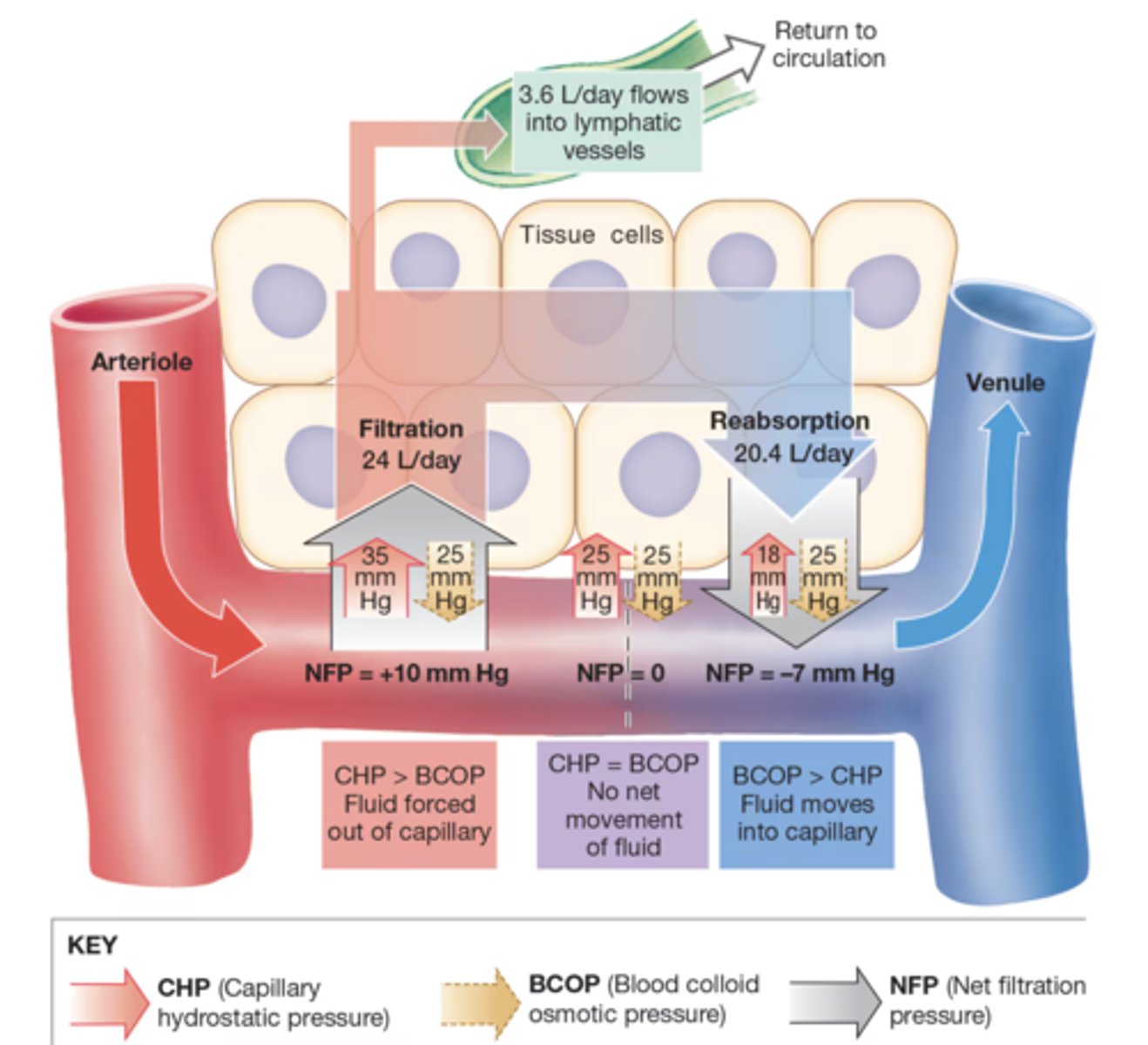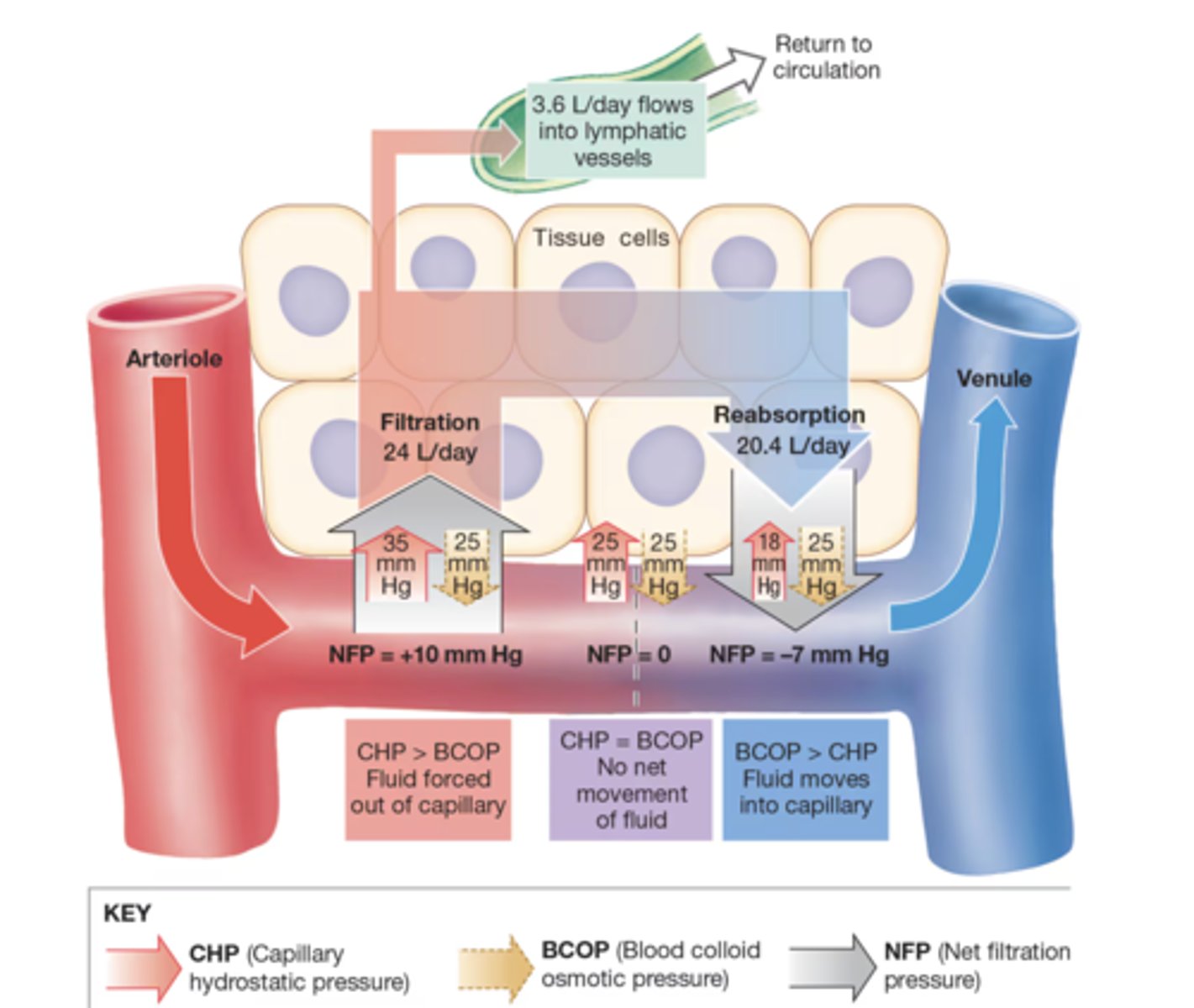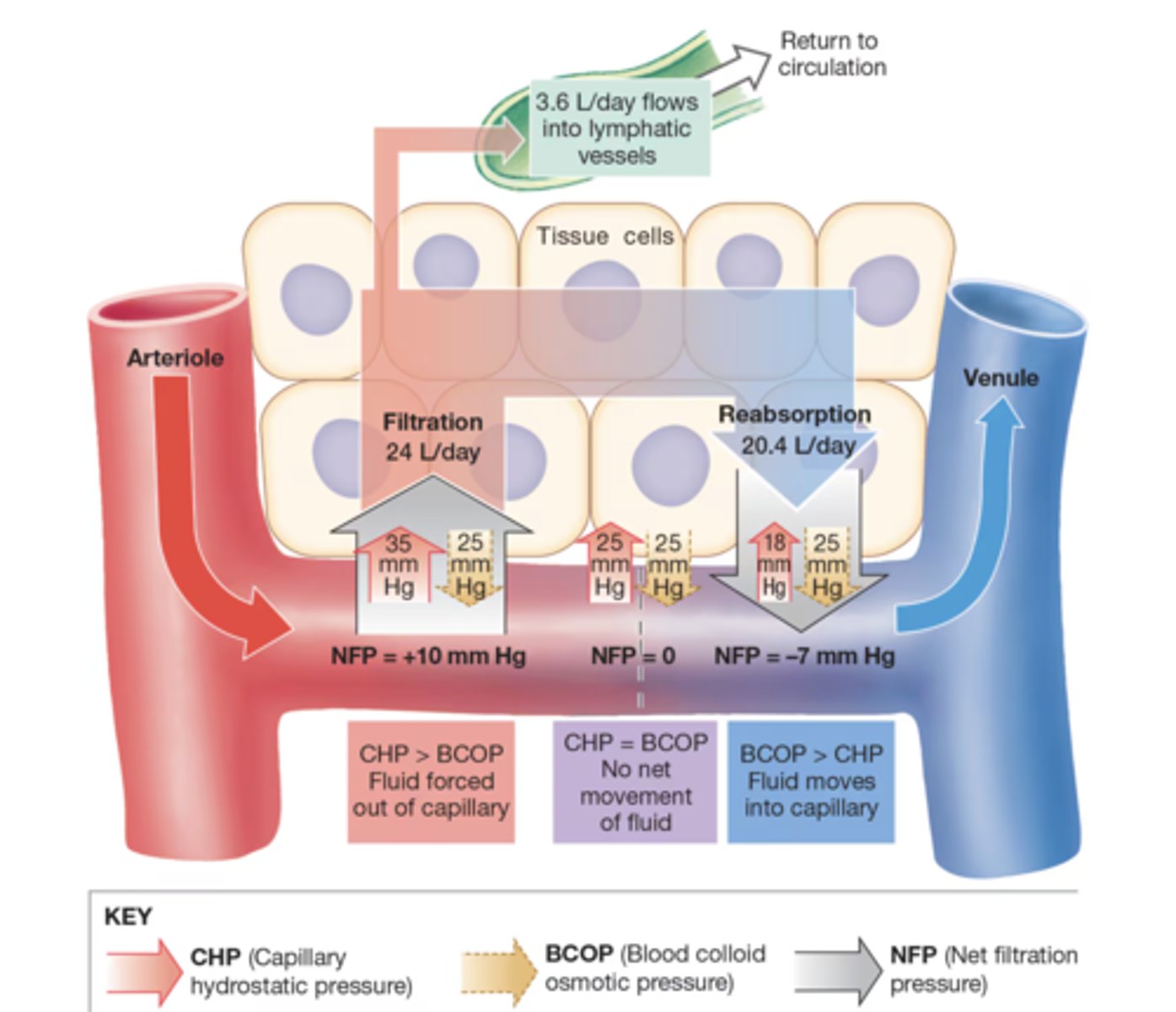Chapter 21: Blood Vessels & Circulation Study Guide
1/72
There's no tags or description
Looks like no tags are added yet.
Name | Mastery | Learn | Test | Matching | Spaced |
|---|
No study sessions yet.
73 Terms
which blood vessels carry blood away from the heart? which blood vessels carry blood to the heart?
arteries carry blood away from the heart and veins carry blood to the heart, whether the blood is oxygenated or deoxygenated
list the layers of blood vessel walls from deep to superficial
tunica intima, tunica media, & tunica externa
what happens to a blood vessel's diameter when the smooth muscle in the wall contracts?
vessel decreases in diameter
what happens to a blood vessel's diameter when the smooth muscle in the wall relaxes?
vessel increases in diameter
why are artery walls typically thicker than in veins?
to help resist the arterial pressure generated by the heart as it pumps blood into the pulmonary trunk & aorta
what is the name of the force that opposes blood flow?
resistance
what is an aneurysm?
a weakening in the arterial wall causing an outpouching or enlargement of the artery
what is arteriosclerosis?
the formation of lipid deposits (plaque) in the tunica media associated with damage to the endothelial lining
what is the scientific name for a stroke?
cerebrovascular accident (CVA)
what are plaques?
a typical lesion
what is the difference between continuous and fenestrated capillaries?
continuous capillaries have a complete endothelial lining without gaps, while fenestrated capillaries have pores, or "windows" in their endothelial lining
define angiogenesis
the formation of new blood vessels from preexisting vessels & occurs under the direction of vascular endothelial growth factor
what is the function of vein valves?
allow blood flow only to the heart, prevent blood from flowing backward toward the capillaries
what is deep vein thrombosis?
a serious condition where a blood clot forms in the deep veins of the leg; occurs when venous blood flow slows significantly, triggering coagulation
what is a pulmonary embolism?
a condition where a blockage occurs in the pulmonary arteries, which supply blood to the lungs
which two forces determine capillary blood flow?
pressure & resistance
which force is directly proportional to blood flow?
pressure
which force is inversely proportional to blood flow?
resistance
what occurs during capillary exchange?
the transfer of liquid & solutes between the blood and interstitial fluid
define blood pressure
a force exerted against vessel walls by the blood in the vessels due to the push exerted by cardiac contraction & the elasticity of the vessel walls
what is capillary hydrostatic pressure
the pressure of blood within capillary walls
what is venous pressue?
the pressure of blood within the venous system
list the three factors that determine the total peripheral resistance of the cardiovascular system
vascular resistance, blood viscosity, & turbulence
the forces that oppose blood flow through a vessel is called vascular resistance. the most important factor is friction between the blood and the vessel wall. name two factors that determine the amount of friction.
vessel length & internal vessel diameter
what effect on friction, and therefore vascular resistance, does increasing the length of a blood vessel have?
vascular resistance would be increased
what effect on friction, and therefore vascular resistance, does increasing the luminal diameter of a blood vessel have?
decreases vascular resistance
what effect on resistance does viscous blood and turbulent blood have?
blood with higher viscosity requires more pressure to flow, increasing peripheral resistance turbulence increases resistance & slows down blood flow
when taking someone's blood pressure, you obtain a reading of 115/75. what does the top number and bottom number represent?
systolic pressure and diastolic pressure
define hypertension
abnormally high blood pressure
hypotension
abnormally low blood pressure
the mean arterial pressure declines as the arterial branches become smaller and more numerous. what effect does this have on blood pressure?
blood pressure decreases as it overcomes friction & produces blood flow
define venous return
the amount of blood arriving at the right atrium each minute
what two factors assist the low venous pressures in propelling blood toward your heart?
muscular compression of peripheral veins & the respiratory pump during inhalation
where do all gaseous and chemical exchanges between blood and interstitial fluid take place?
across capillary walls
list three important processes that move materials across typical capillary walls
diffusion, filtration, & reabsorption
define filtration
the removal of solutes as a solution passes through a porous membrane
what process is used for reabsorption?
osmosis
you are measuring pressures in a capillary and find that the CHP is 37mmHg and BCOP is 23mmHg. what type of movement, if any, would occur at this part of the capillary?
filtration (fluid pushed out of the capillary)

what type of movement, if any, would occur at a capillary if the NFP equaled 0?
no movement

why doesn't BCOP change along the length of a capillary?
plasma proteins do not leave the bloodstream, maintaining steady osmotic pressure

since we don't have enough blood to maintain adequate blood flow to all the capillaries in the body homeostatic mechanisms operating at the local, regional, and systemic levels adjust blood flow through the capillaries to meet the demands of peripheral tissues. list three homeostatic mechanisms that accomplish this.
autoregulation, neural mechanisms, & endocrine mechanisms
which mechanism causes immediate, localized homeostatic adjustments to blood flow: autoregulation, neural mechanism, or endocrine mechanism?
autoregulation
where is the cardiovascular center located in the brain?
the medulla oblongata
which activities does the vasomotor center control?
activity of the sympathetic motor neurons
where are baroreceptors associated with central regulation of blood flow located in the body? what do they monitor?
the carotid sinuses, the aortic arch, & the wall of the right atrium; they monitor blood pressure & regulate cardiovascular function
when blood pressure rises, the increased output from the baroreceptors alters activity in the cardiovascular center and produces two major effects. what are they?
a decrease in cardiac output & widespread peripheral vasodilation
when blood pressure falls below normal, the decreased output from the baroreceptors alters activity in the cardiovascular center and produces two major effects. what are they?
an increase in cardiac output & widespread peripheral vasoconstriction
where are chemoreceptors associated with central regulation of blood flow located in the body? what do they monitor?
the carotid bodies, situated in the neck near the carotid sinuses, & the aortic bodies, near the aortic arch
list five hormones that function in central regulation of blood flow.
epinephrine (E), norepinephrine (NE), antidiuretic hormone (ADH), angiotensin II, natriuretic peptides (ANP & BNP)
what effect on blood vessels does the release of EPO have? does this increase or decreased blood pressure?
vasoconstriction is caused, thereby increasing blood pressure
what effect on blood volume and blood pressure does the release of ANP and BNP produce?
reduce blood volume and blood pressure
the term special circulation refers to the vascular supply through organs in which blood flow is controlled by separate mechanisms. what are three organs where special circulation occurs?
the brain, the heart, & the lungs
list three changes to the cardiovascular response that occur during light exercise
extensive vasodilation occurs, the venous return increases, & cardiac output rises
during strenuous exercise, what three organs have an increase in blood flow?
the skeletal muscles, the lungs, & the heart
which type of cholesterol is considered "bad" cholesterol? how does exercise lower cholesterol levels?
low-density lipoproteins; by stimulating enzymes that help move LDLs from the blood to the liver
when a person hemorrhaging, there are a few cardiovascular system short-term responses that promote elevation of blood pressure. what effect do these have on cardiac output on vessel diameter?
vasoconstriction
where does the systemic circuit being & end?
at the left ventricle & ends at the right atrium
what blood vessel begins at the aortic valve of the left ventricle?
the ascending aorta
what two parts of the aorta are connected by the aortic arch?
the ascending aorta & the descending aorta
name the three elastic arteries that originate along the aortic arch that deliver blood to the head, neck, shoulders, & upper limbs
the brachiocephalic trunk, the left common carotid artery, & the left subclavian artery
what parts of the body receive blood from the subclavian artery?
the arms, chest wall, shoulders, bacl, & central nervous system
which blood vessel are you feeling when checking for a pulse along either side of the windpipe?
the carotid artery
which blood vessels deliver oxygenated blood to the brain?
the vertebral arteries & the internal carotid arteries
define cerebrovascular accident (stroke)
interruptions of the vascular supply to a portion of the brain
the neck and the limbs generally have two sets of peripheral veins, one superficial and the other deep. what is the important function does this serve?
dual venous drainage is important for controlling body temperature
which great vessel receives blood from all the body's systemic veins (except the cardiac veins)?
either the superior vena cava or the inferior vena cava
which part of the vena cava receives blood from the tissues and organs of the head, neck, chest, shoulders, and upper limbs?
the superior vena cava (SVC)
which part of the vena cava collects most of the venous blood from organs inferior to the diaphragm?
inferior vena cava (IVC)
what is the largest vessel of the hepatic portal system?
the hepatic portal vein
which blood vessels bring blood to the placenta?
a pair of umbilical arteries
which blood vessel transfers blood from the placenta?
the single umbilical vein
what occurs at the foramen ovale?
blood is allowed to flow directly from the right atrium to the left atrium
a short-circuit exists between the pulmonary and aortic trunks. what are they connected by?
the ductus arteriosus